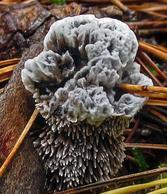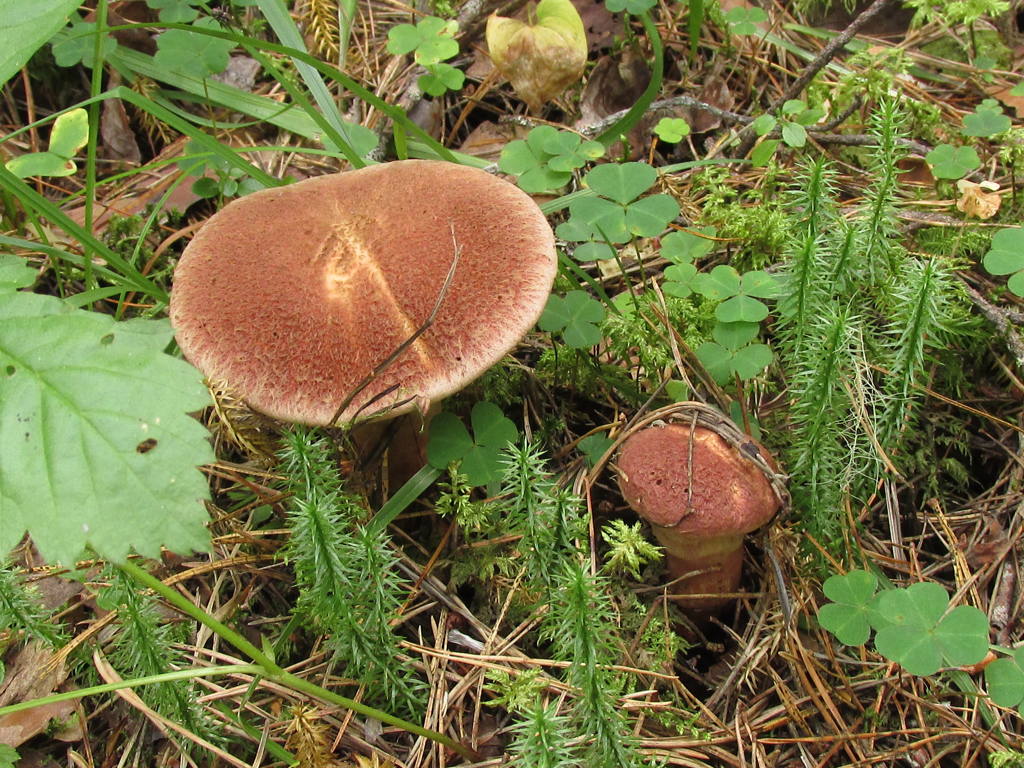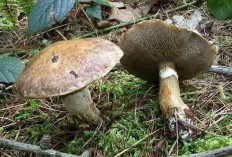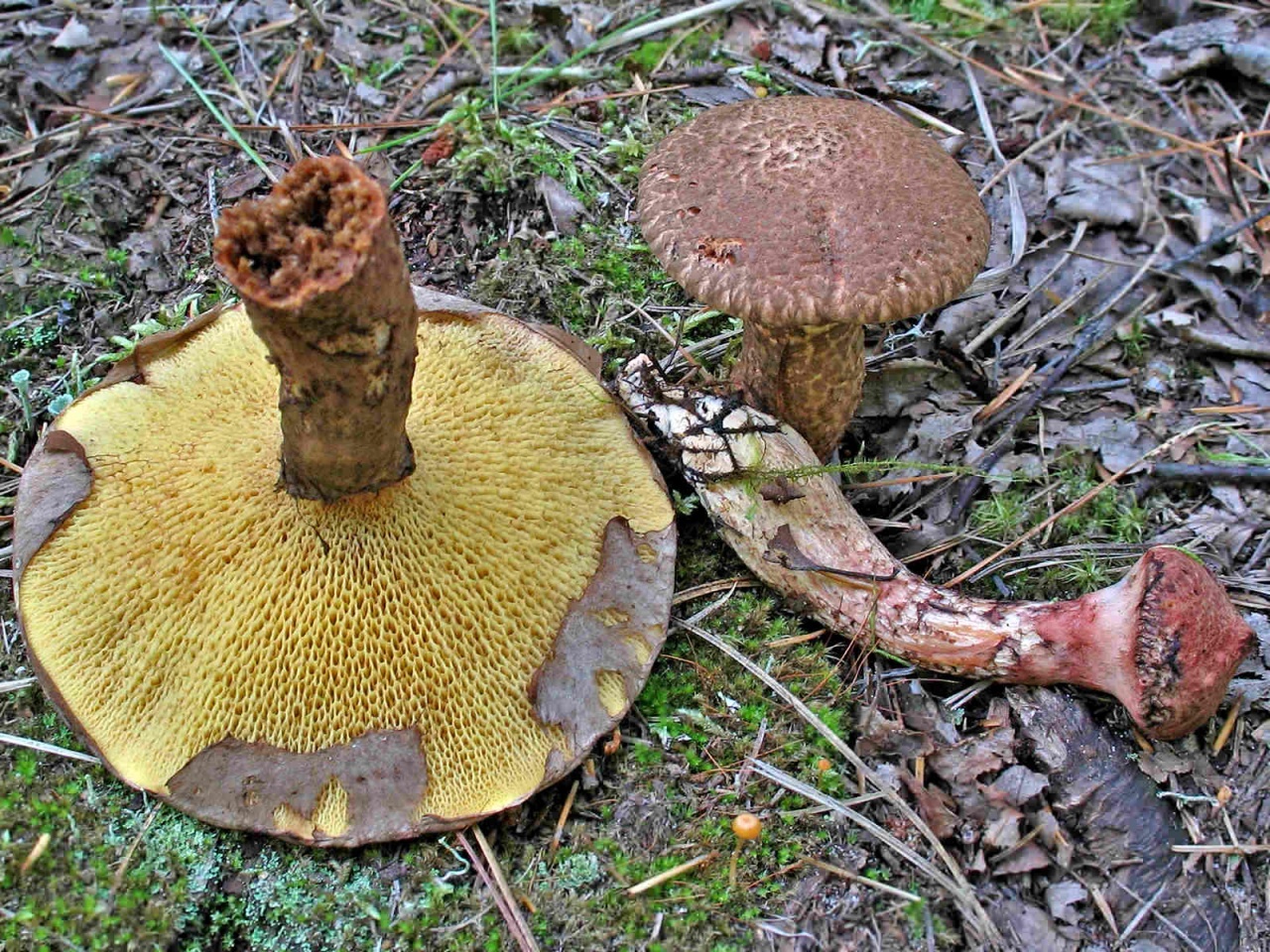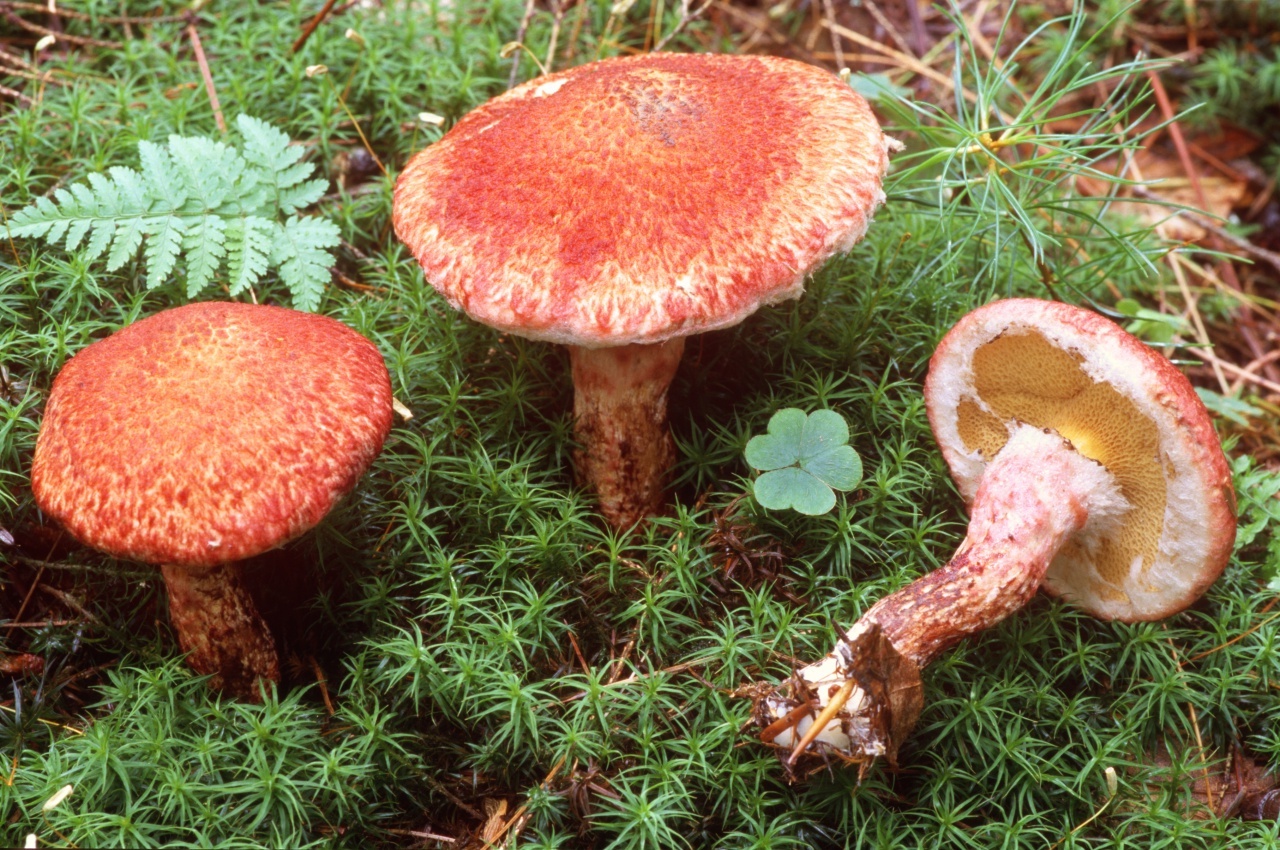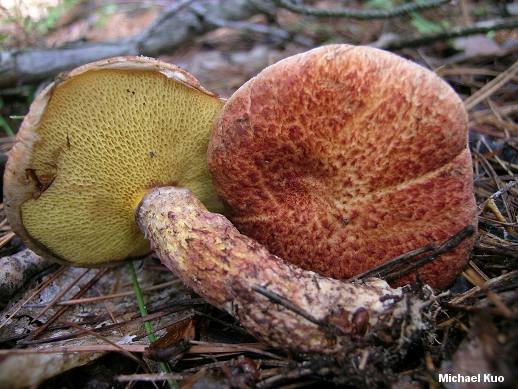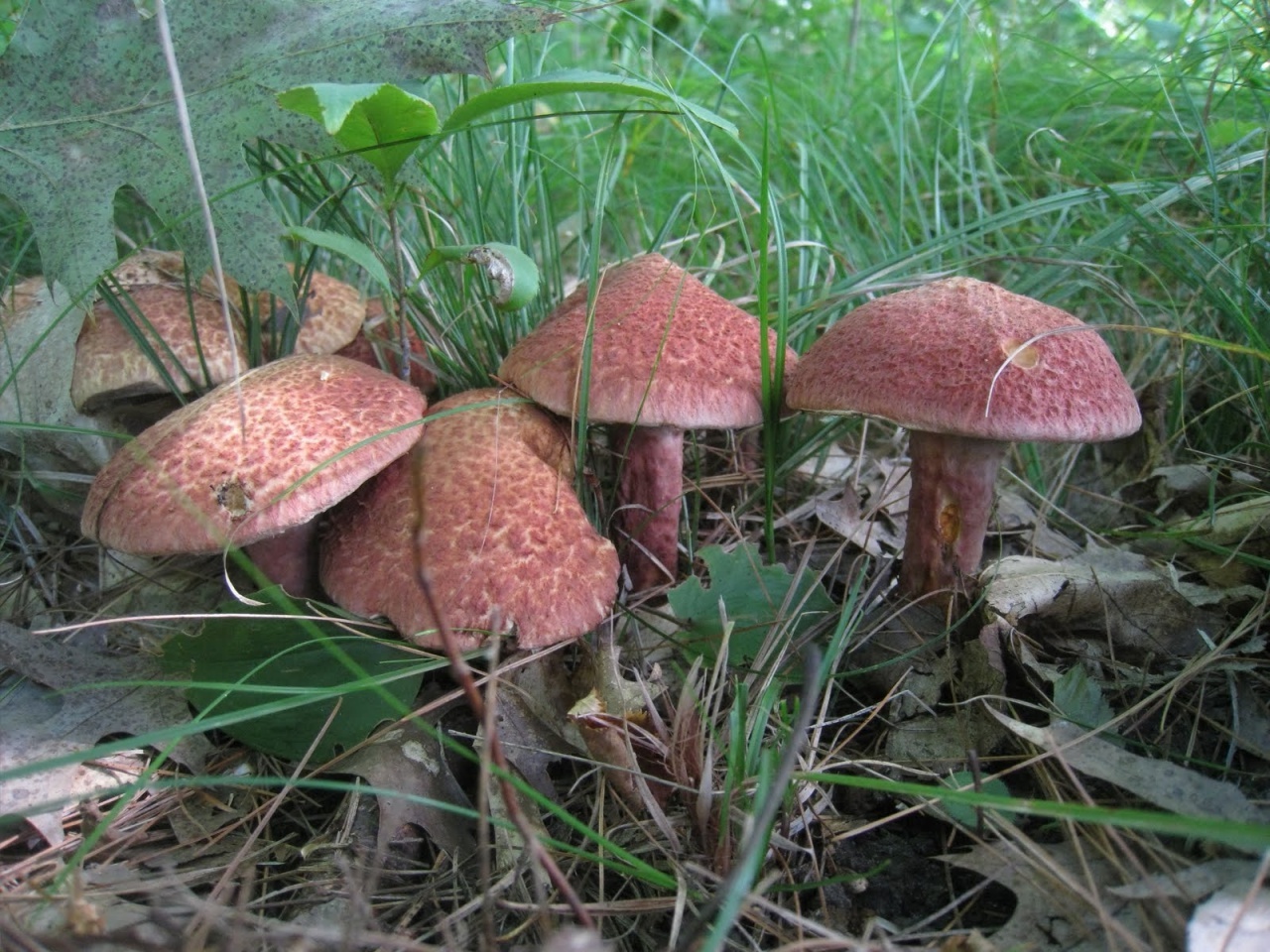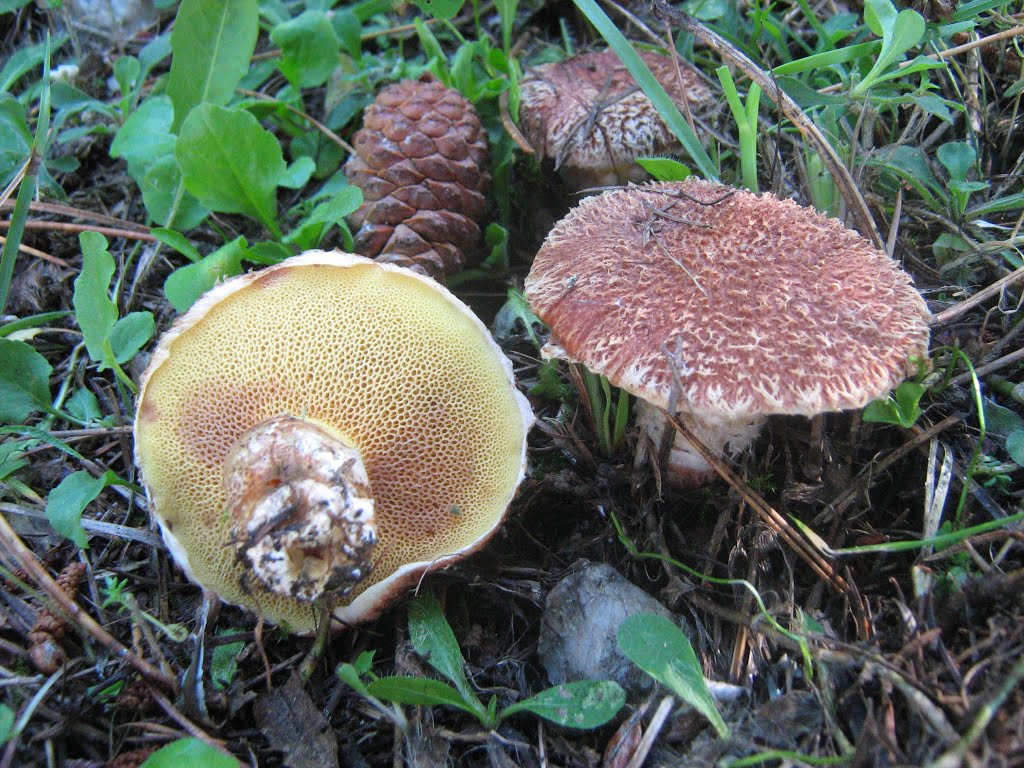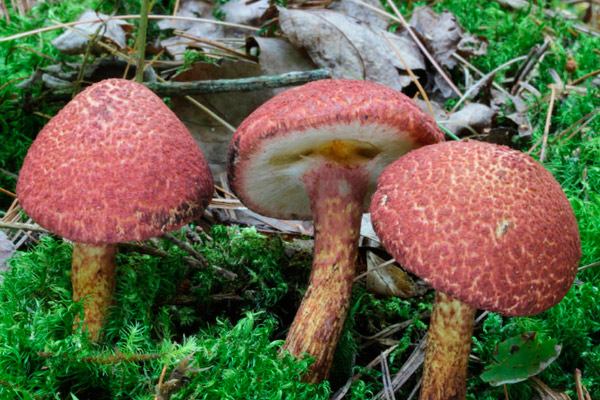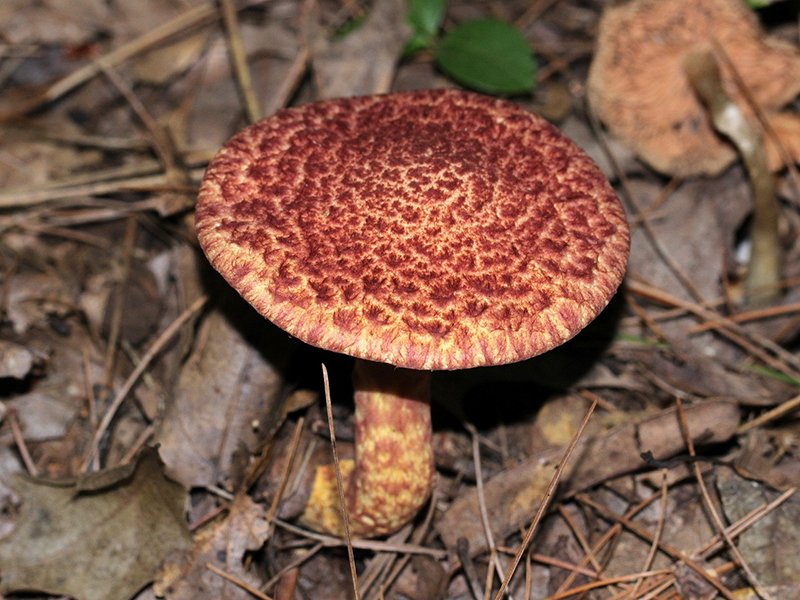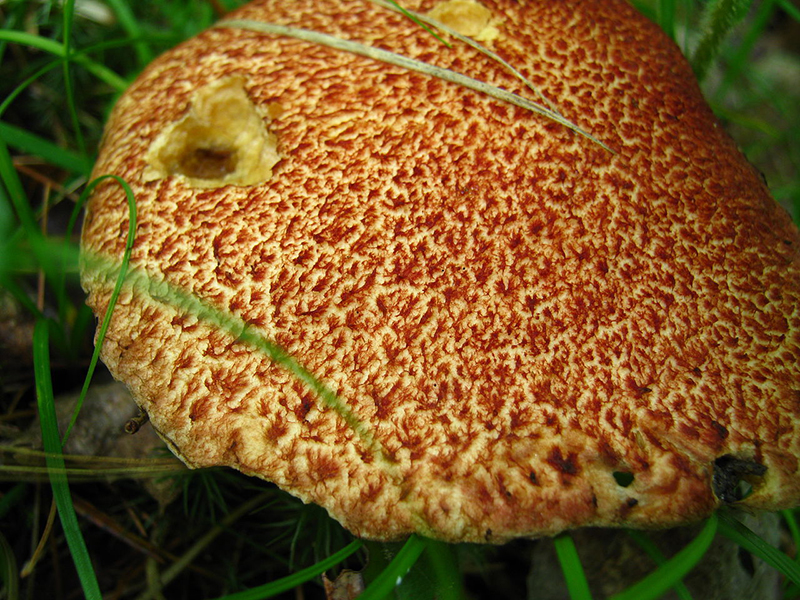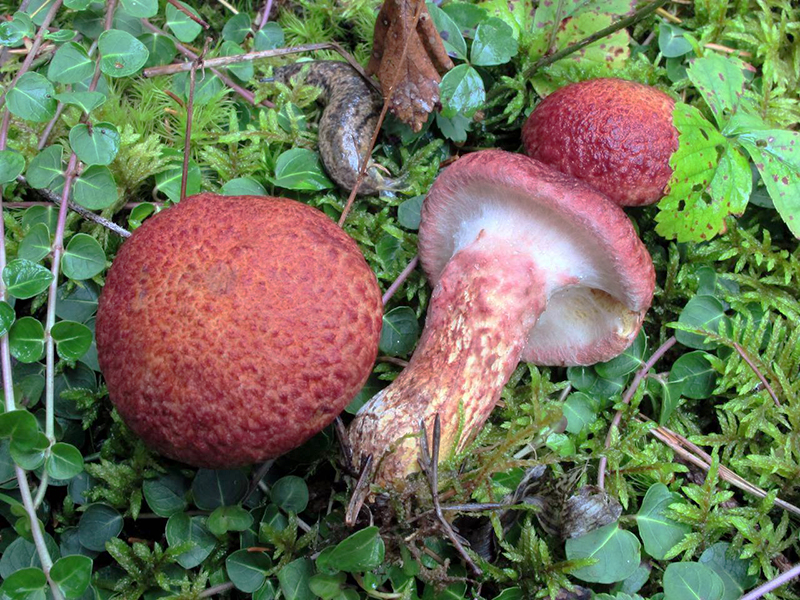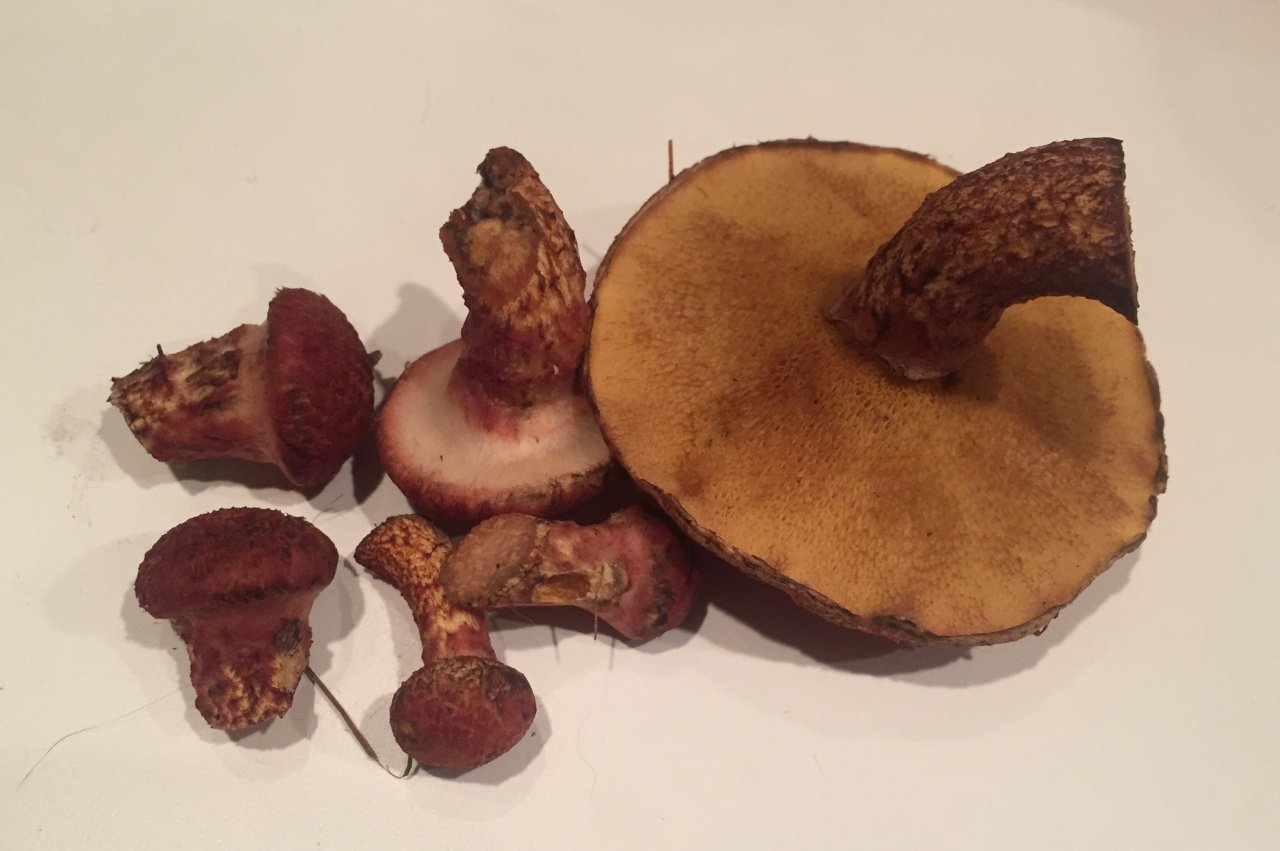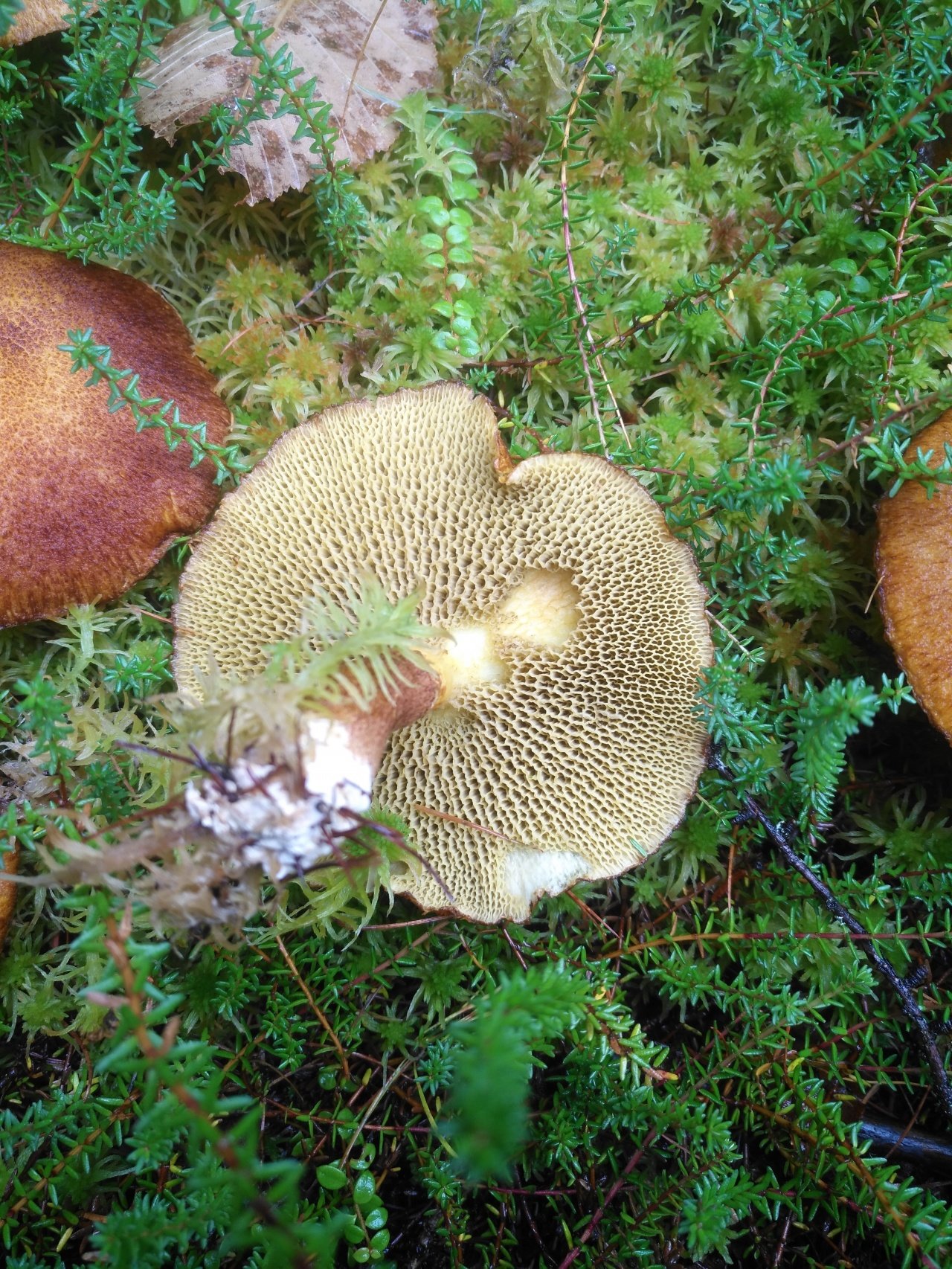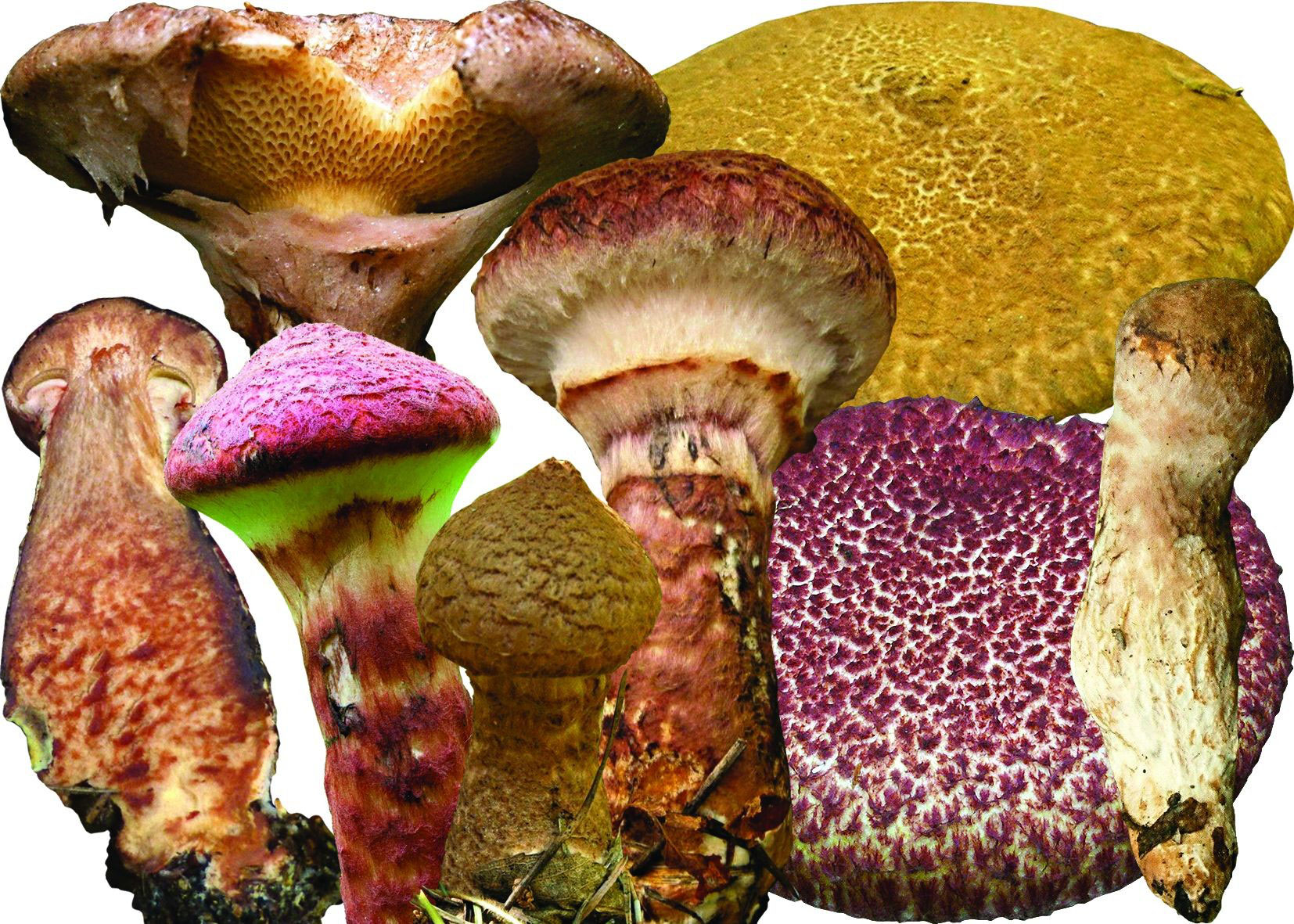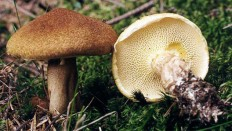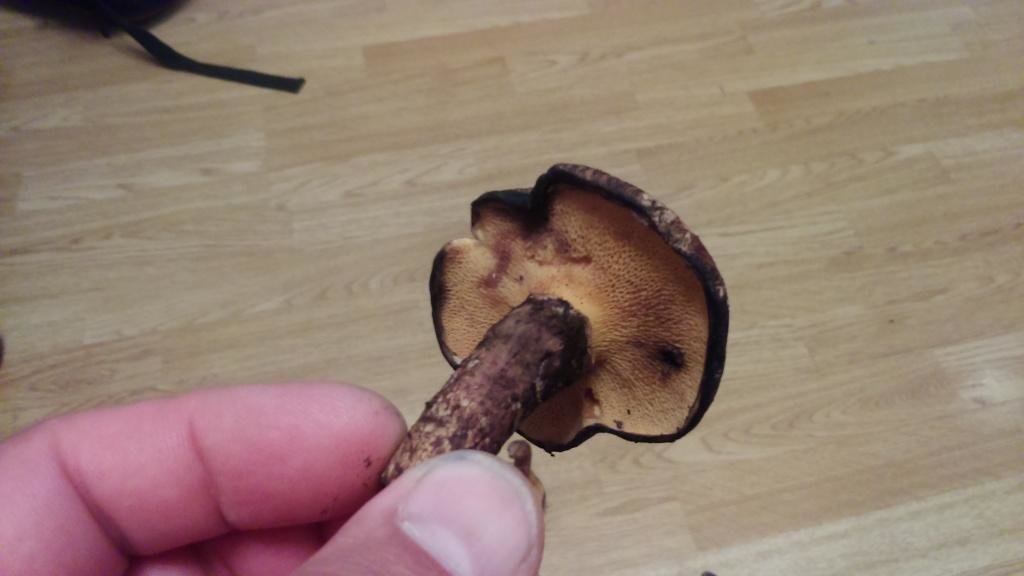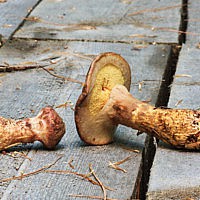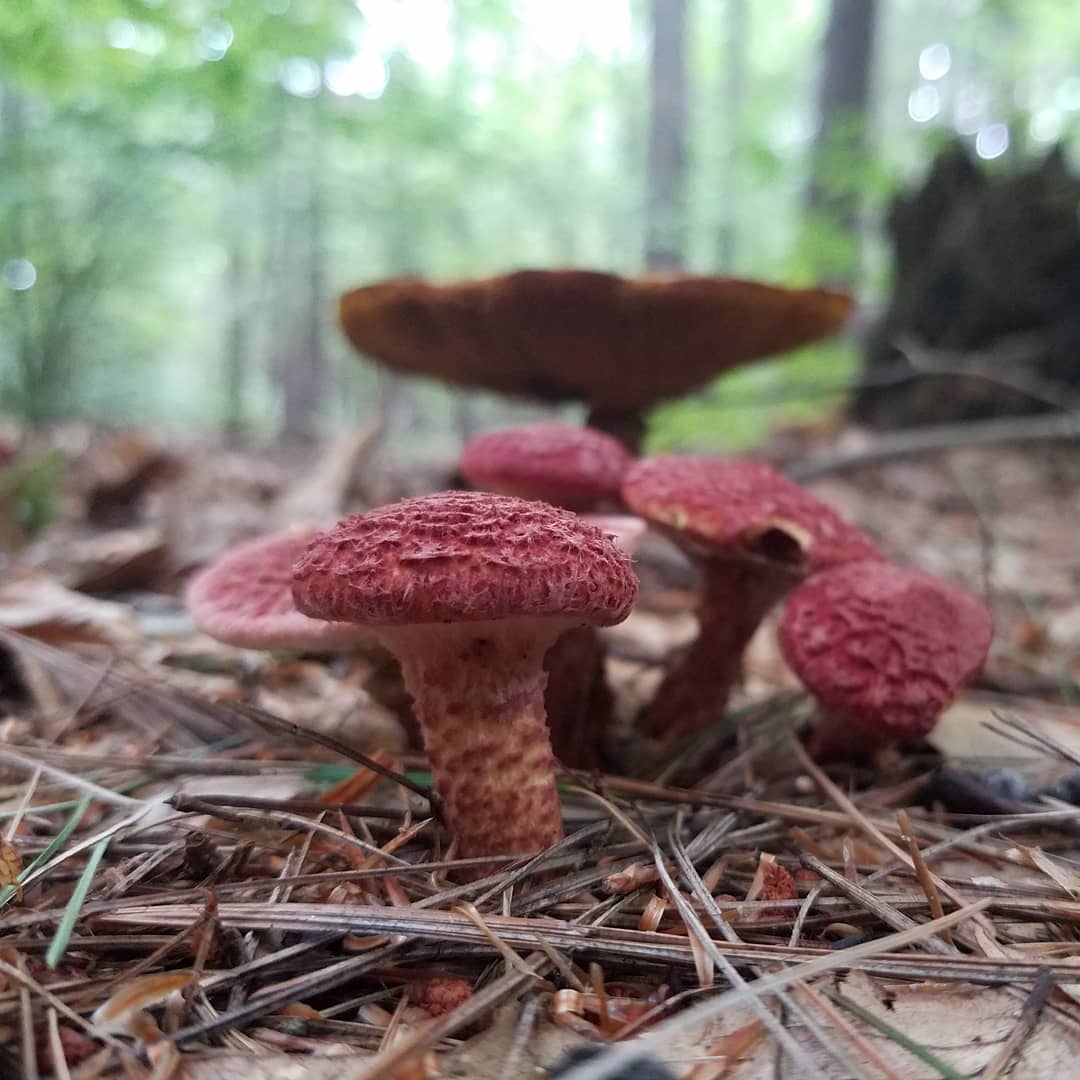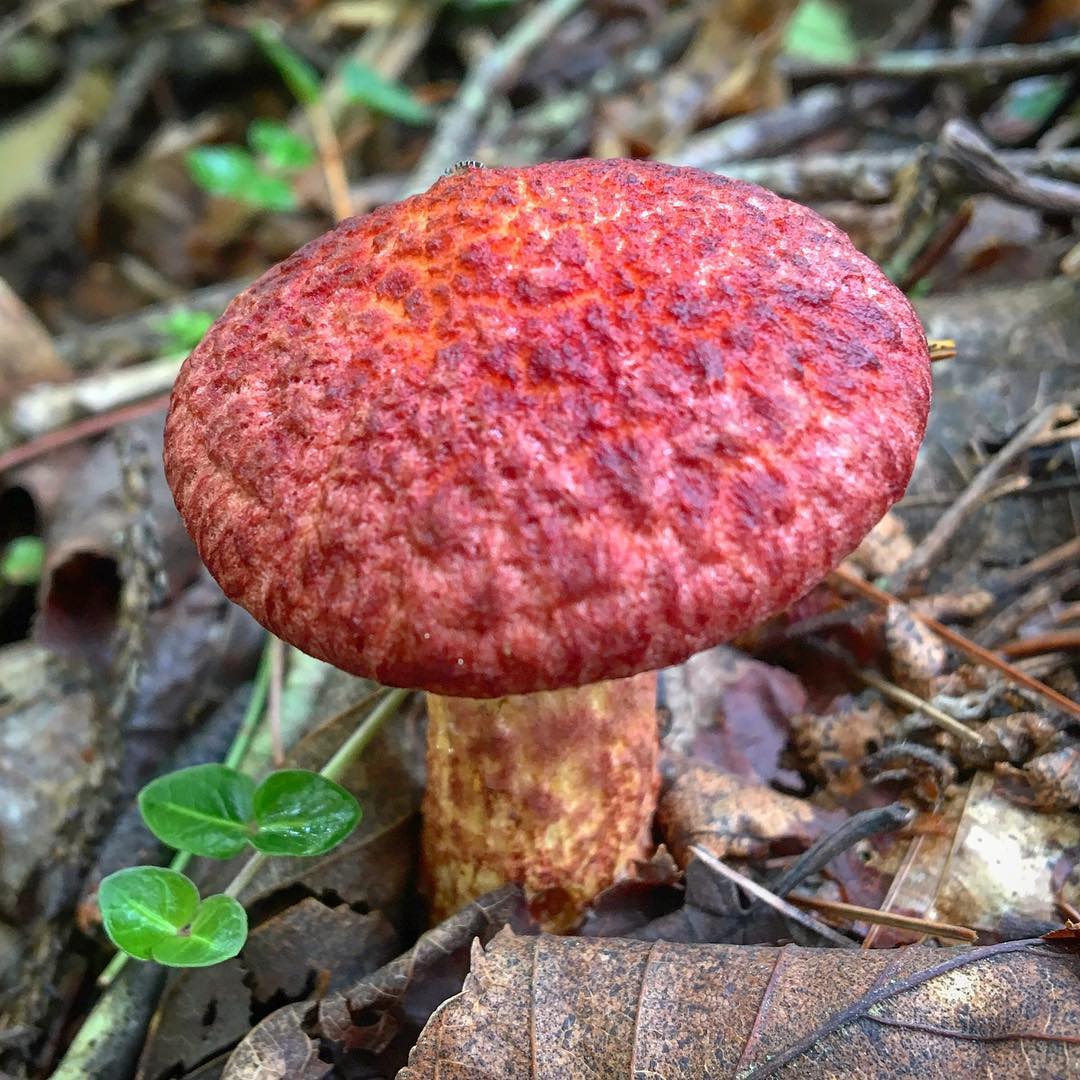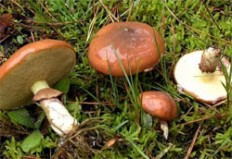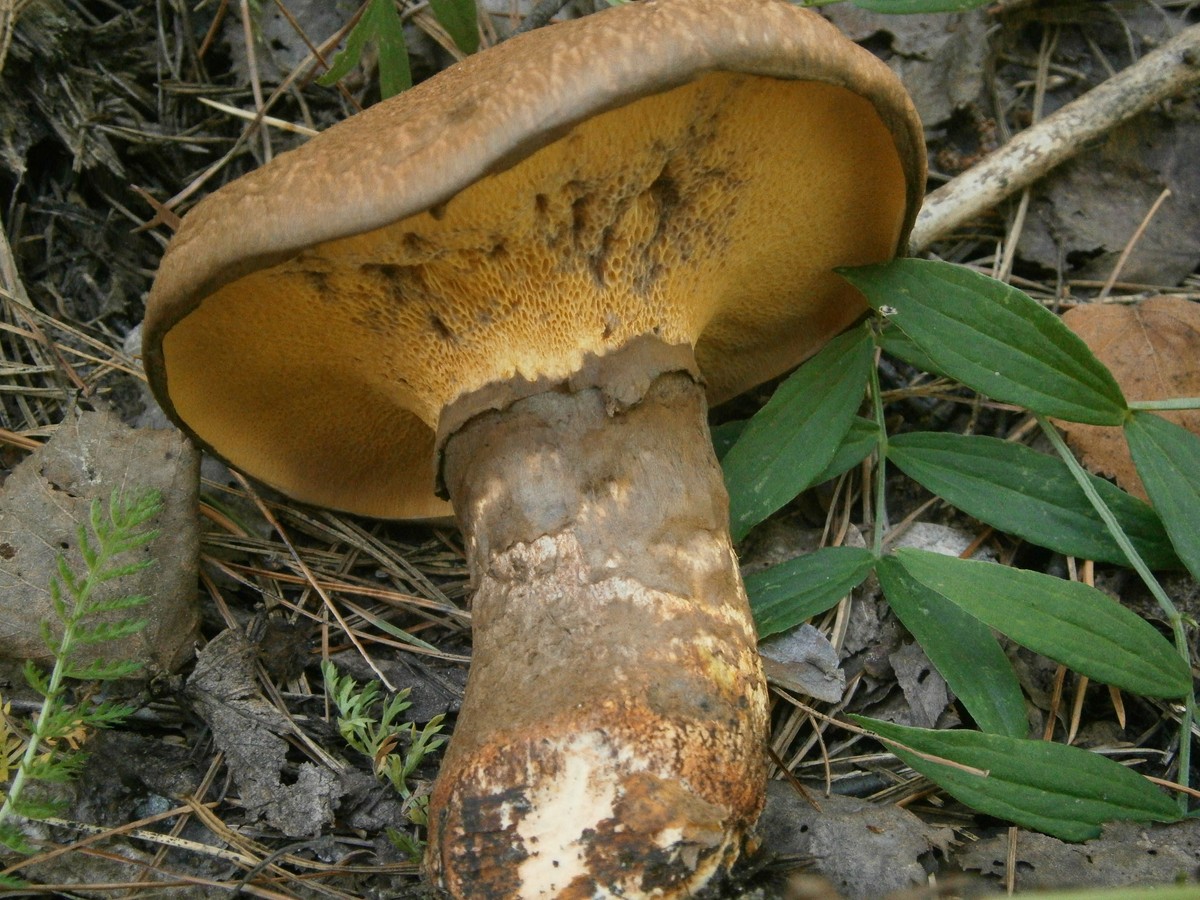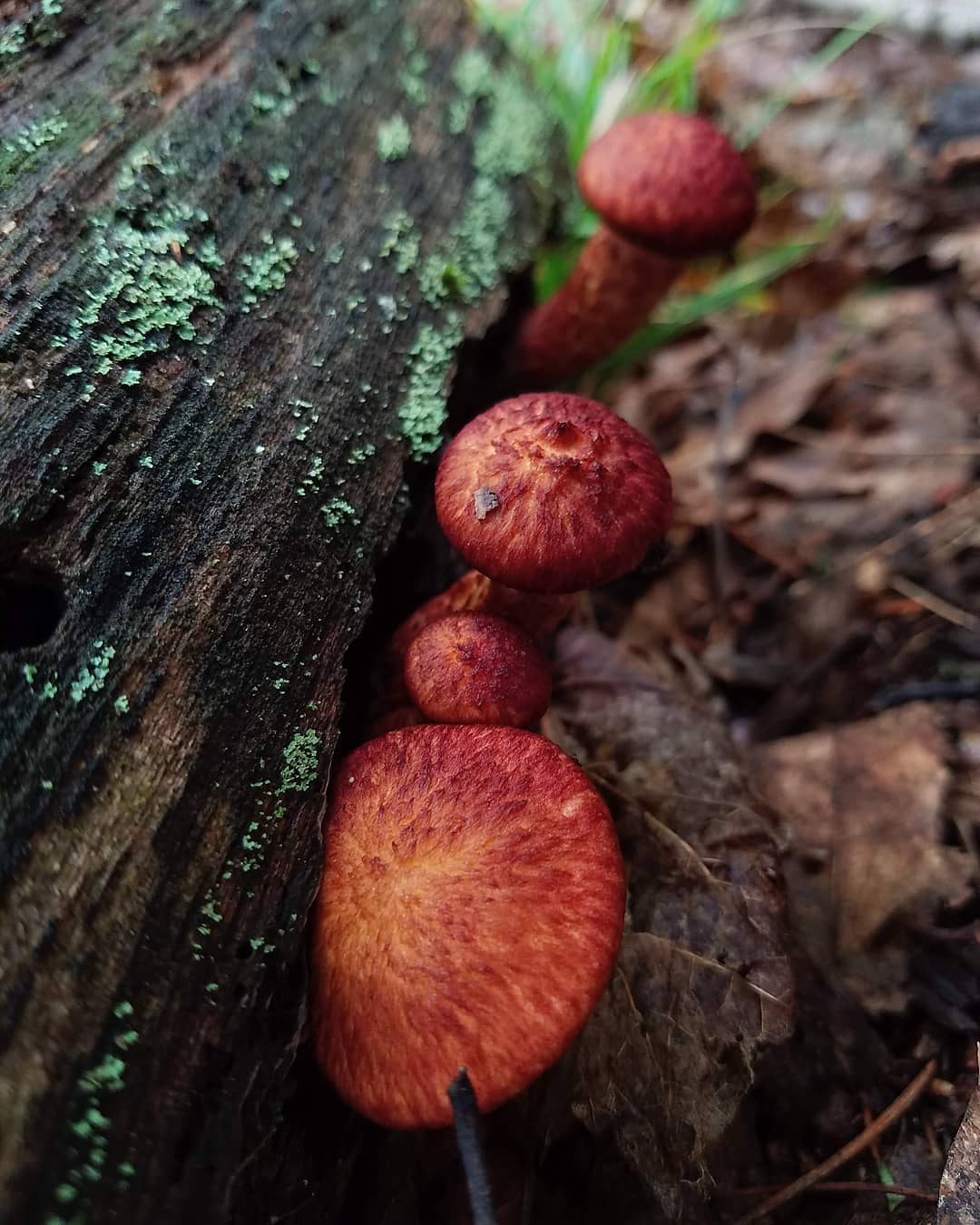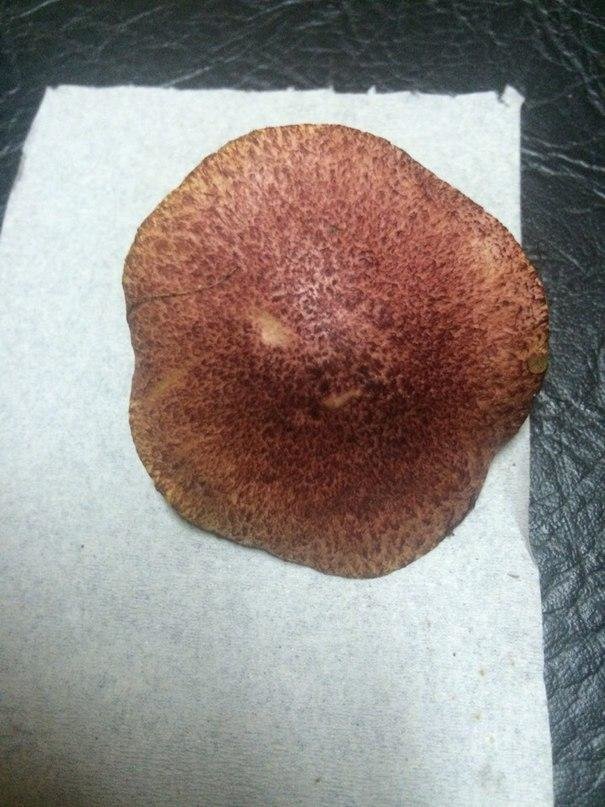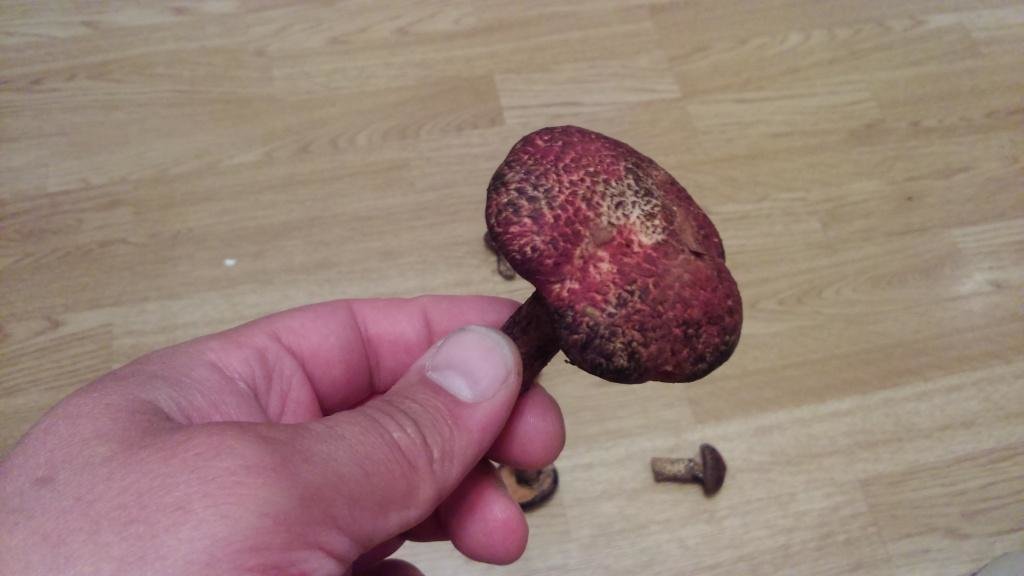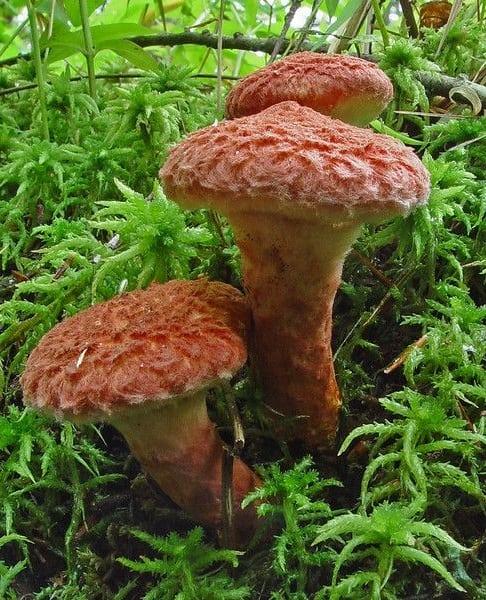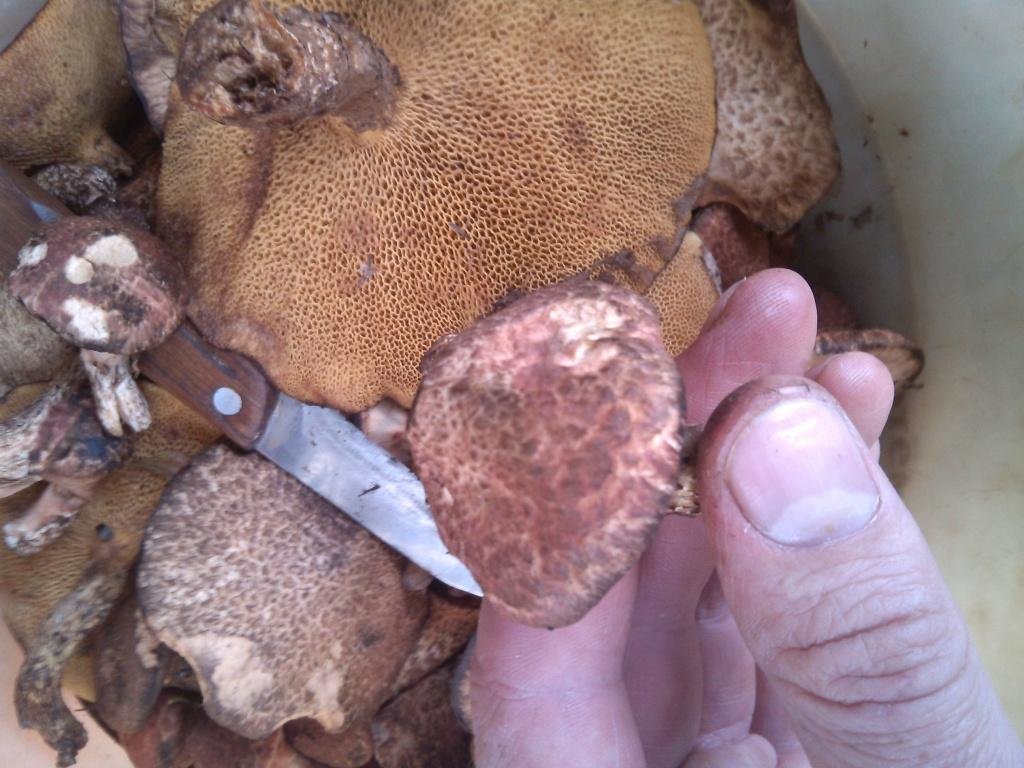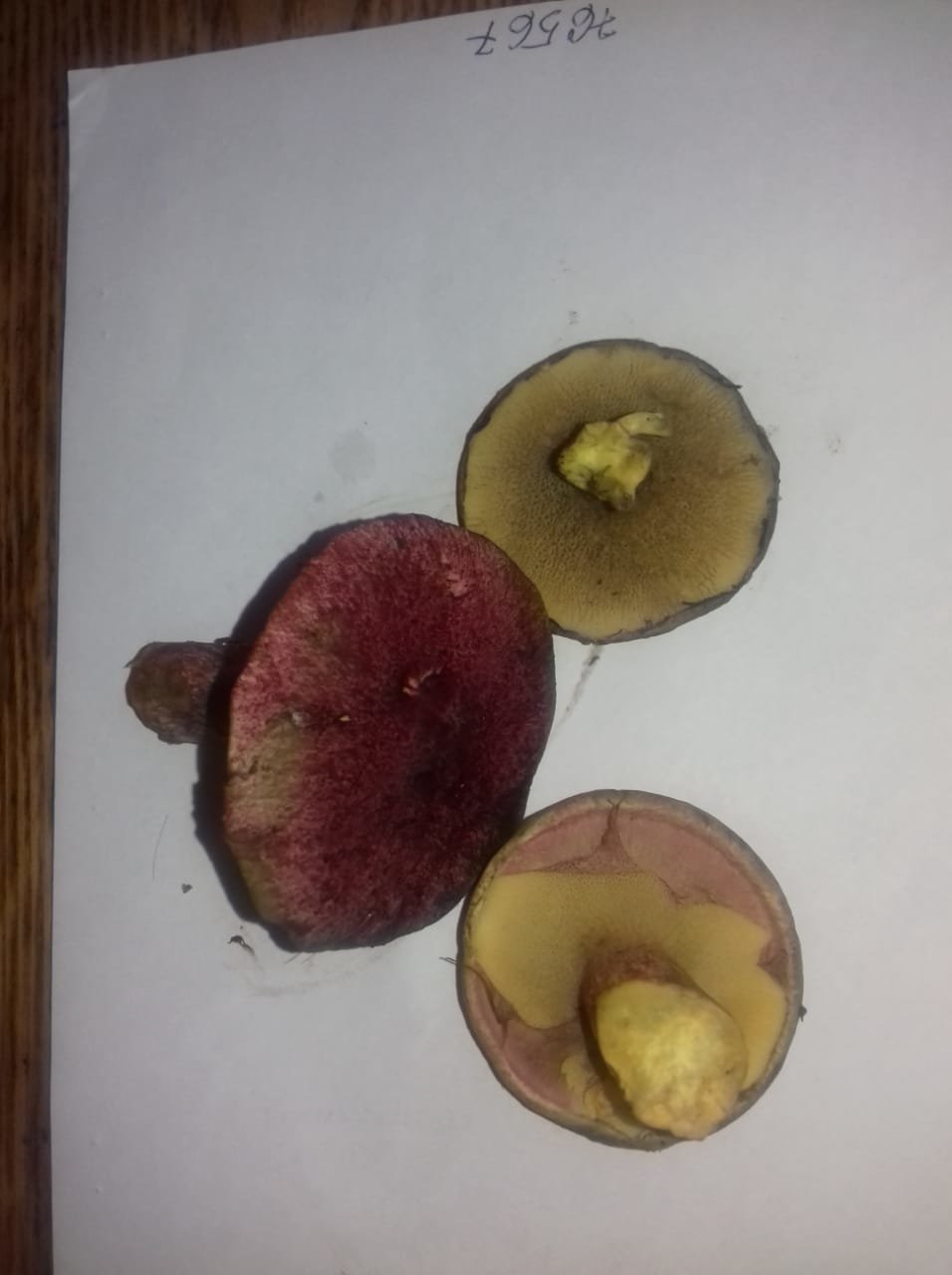Description
The scientific name for boletus - Suillus comes from the Latin noun sus, meaning pig. Therefore, Suillus means "pork" and refers to the fatty cap, which is common to different types of boletus.
p, blockquote 3,0,0,0,0 ->
Boletus mushrooms are distinguished from other mushrooms by:
p, blockquote 4,0,0,0,0 ->
- slimy caps;
- radially or randomly located pores;
- the presence of a partial cover between the cap and the leg;
- glandular specks;
- habitat among coniferous vegetation.
Unfortunately, many types of boletus mushrooms have only a few of these characteristics.
p, blockquote 5,0,0,0,0 ->
As mentioned above, one of the most obvious characteristics of oil is a slimy cap. Of course, the surface may not be very sticky in dry weather, but signs of a mucous layer are visible because debris adheres to the cap. In dried specimens, the cap coating also remains quite shiny.
p, blockquote 6,0,0,0,0 ->
In addition to the slimy texture, the cap is not very characteristic of this fungus, reaching 5-12 cm in diameter. It is round and convex, but smoothes over time. It is mostly brown in color, although it ranges from dark brown to reddish brown to yellowish brown.
p, blockquote 7,0,0,0,0 ->
The surface of very small pores is whitish to light yellow in color. In some types of oil, the pores are located randomly, in others radially. With age, the pores darken and become yellow to greenish-yellow in color. The spores that form in the pores are brown in color. In young fungi, the pore surface is partially covered with a veil. This blanket is mostly white and rips open the pore surface when the fungus forms spores. On mature mushrooms, the remnants of a partial veil can be seen as a ring around the stem and small pieces of tissue remain along the edge of the cap.
p, blockquote 8,0,0,0,0 ->
Butter mushrooms are rather squat, medium-sized mushrooms with a solid cylindrical stem 3-8 cm long, 1 to 2.5 cm wide. Some species have a ring formed from the remnants of a partial as the fungus develops). It is initially white, then slowly takes on a purple hue, especially on the underside. Above the ring, the whitish leg fades to match the cap near the top.
p, blockquote 9,0,0,0,0 ->
This part of the peduncle is also adorned with numerous clusters of cells called glandular punctures. These glandular dots darken with age and stand out from the rest of the peduncle in adulthood. Glandular dots appear as a result of cell swelling and resemble tiny bumps.
p, blockquote 10,0,0,0,0 ->
Oiler red-red
Oiler reddish-red - Latin Suillus tridentinus
In a different way, this mushroom is called the Trident Butter or the Trentine Butter.
Description
Mushroom cap
The diameter of the Tridentan Oiler's hats is 50-150 mm. At a young age, they have the shape of a hemisphere or pads, later they become more open and flat.
The hat is covered with a rough skin dotted with many fibrous reddish-orange scales that run radially and give the hat a cracked appearance. In rainy weather, it becomes covered with mucus. The colors of the "headwear" are orange - yellow, pale orange, red - orange or red - brown. The older the Trentian Butter, the darker the color of the hat. Occasionally, flaky pieces of white bedspreads remain on the edges of the hats.
The hats are filled with a tight, fleshy pulp of a yellowish, lemon-yellow, just yellow or yellow-brown hue. If damaged, it turns reddish.
The hat bottom consists of an accreted tubular layer of yellowish or orange-yellow tubes with large pores and torn edges, running down the legs. The pores are irregular and angular.
The reddish-red oiler reproduces by elongated yellowish-olive spores that form in an olive-yellow or olive-brownish spore powder.
Stipe
Legs of reddish-red boletus usually taper upwards, occasionally downwards, and reach 10-35 mm in thickness and 40-100 mm in length.The leg has the shape of a cylinder and a filmy ring left over from the bedspread.
Above the ring, it turns yellowish and is covered with a fine mesh, below the ring, the leg is yellow-orange. Closer to the base, a longitudinal pattern of a darker shade is often formed on the legs. The flesh consists of soft fibers and is colored in the same way as the hat, but it is somewhat darker.
Oiler reddish-red - Latin Suillus tridentinus
Places of growth and fruiting
The reddish-red oiler prefers soils rich in limestone, and chooses soil near the rhizomes of larch for growth and fruiting. The fungus is quite rare, and in some regions it is listed in the regional Red Data Books as an endangered species.
Mushroom pickers collect it in the plain and mountainous Altai, West Siberian and Alpine forests, in European countries.
Fruiting of the mushroom is single or small-group, and depending on the area and climate, it occurs in July - end of October or the last days of May - the first week of November.
Edibility
The pulp of the Tridentine butterdish is weak, but it smells like mushrooms and has a very pleasant taste with sour notes. It is considered edible and belongs to the 2nd category of edibility as a mushroom with high nutritional qualities.
Trentino butter can be eaten stewed and fried, added to soups, sauces and salads, pickled, salted and dried for the winter.
Painted oil can: what it looks like, where it grows, when it bears fruit

Painted oil can - a mushroom of the Oily family, genus Oily. It is also called painted boletinus, painted boletin and painted sieve. This mushroom belongs to the edible species.
The Latin name of the mushroom is Suillus pictus.
External description of the painted oiler
The diameter of the cap of the painted oiler is 3-15 centimeters, but in exceptional cases it can reach 18 centimeters.
Along the edges of the cap, remnants of a private coverlet are often noticeable, which look like flakes. The shape of the cap is wide, conical and cushion-shaped, with a small tubercle visible in the middle.
Also in this mushroom, the shape of the cap is flat-cushion-shaped with the edges wrapped on top.
In different weather, the color of the cap can change, becoming brighter or darker.
When the cap matures and ages, it turns yellow, sometimes its color becomes yellow-brown, and in young specimens, the caps are red, burgundy brown and brick red.
The cap is covered with small scales of a brown or gray-brown hue, through the layer of which the color of the cap itself is visible. If insects infect the fruiting body, it also changes color.
The mushroom leg at the painted oiler reaches 4-12 centimeters in length, and its diameter ranges from 1.5 to 2.5 centimeters. The base can sometimes thicken by 5 centimeters. Above the ring is a large number of tubes that descend along the stem and form a mesh.
Spore tubes are rather large, their width reaches 2-3 millimeters. In structure, the tubules are elongated radially, they descend to the pedicle in uneven lines. The color of the tubes is bright yellow, rich ocher or ocher-brown. If you press on the tubes, they turn brown. The tubules are very difficult to separate from the cap.
The pulp of the mushroom is very firm. The color of the flesh is yellow, on the cut it turns red or becomes brownish-red in color. The taste and smell of the colored butterdish pulp is pleasant, mushroom.
A private bedspread of small thickness, with a downy, white or pinkish-white color. In mature specimens, only one ring of white or gray remains from the bedspread, which gradually dries up and darkens. Spore powder of olive-brown, clayey or yellow-brown color.
Places of growth of painted oil
Painted oil plants begin to bear fruit in June, and this process ends in September. Painted butterflies prefer fertile soils, sometimes they come across among mossy areas. They are often found in entire colonies.
Mushrooms of this species form mycorrhiza with cedar pines.Occasionally, painted boletus can be found in Germany and some other European countries. Colored boletus is also widespread in the northeast of North America, where they form mycorrhiza with Weymouth pine.
Taste qualities of painted butter
Undoubtedly, the painted butter dish is one of the edible mushrooms. These delicious mushrooms can be boiled, fried, and made into mushroom soups. Painted boletus can even be consumed fresh, without prior frying and boiling.
Other mushrooms of this genus
The red oil can is an edible mushroom. The fruiting body of a medium-sized red oil can. Its color is reddish-red, and the surface is sticky. On the leg there is a remnant of a filmy bedspread in the form of small warts.
Red boletus grows in mixed forests. Favorite growing places are areas under larch trees. The first wave of red boletus appears in early summer, then they bear fruit in mid-July, and the third time - from August to the first frost. Red boletus are found in large groups.
According to the nutritional value of boletus, red ones belong to the 2nd category, among russules they are considered the most delicious. They are very fragrant, not wormy or flabby. They can be boiled, marinated, dried, and fried.
The color of the cap is yellow-brown or brick-red. The leg is located in the center, it is clavate, pinkish in color with a reddish bloom.
The pulp is yellowish, without a pronounced smell and taste.
Ruby boletus is widespread in Europe, but they are extremely rare. They grow in oak forests. In terms of taste, ruby butterflies belong to the 2nd category.
Definitioner
- Basidia (Basidia)
-
Lat. Basidia. A specialized structure of sexual reproduction in fungi, inherent only in Basidiomycetes. Basidia are terminal (end) elements of hyphae of various shapes and sizes, on which spores develop exogenously (outside).
Basidia are diverse in structure and method of attachment to hyphae.
According to the position relative to the axis of the hypha, to which they are attached, three types of basidia are distinguished:
Apical basidia are formed from the terminal cell of the hypha and are located parallel to its axis.
Pleurobasidia are formed from lateral processes and are located perpendicular to the axis of the hypha, which continues to grow and can form new processes with basidia.
Subasidia are formed from a lateral process, turned perpendicular to the axis of the hypha, which, after the formation of one basidium, stops its growth.
Based on morphology:
Holobasidia - unicellular basidia, not divided by septa (see Fig. A, D.).
Phragmobasidia are divided by transverse or vertical septa, usually into four cells (see Fig. B, C).
By type of development:
Heterobasidia consists of two parts - hypobasidia and epibasidia developing from it, with or without partitions (see Fig. C, B) (see Fig. D).
Homobasidia is not divided into hypo- and epibasidia and in all cases is considered holobasidia (Fig. A).
Basidia is the place of karyogamy, meiosis and the formation of basidiospores. Homobasidia, as a rule, is not functionally divided, and meiosis follows karyogamy in it. However, basidia can be divided into probasidia - the site of karyogamy and metabasidia - the site of meiosis. Probasidium is often a dormant spore, for example in rust fungi. In such cases, probazidia grows with metabasidia, in which meiosis occurs and on which basidiospores are formed (see Fig. E).

See Karyogamy, Meiosis, Gifa.
- Pileipellis
-
Lat. Pileipellis, skin - differentiated surface layer of the cap of agaricoid basidiomycetes. The structure of the skin in most cases differs from the inner flesh of the cap and may have a different structure. The structural features of pileipellis are often used as diagnostic features in descriptions of fungi species.
According to their structure, they are divided into four main types: cutis, trichoderma, hymeniderma and epithelium.
See Agaricoid fungi, Basidiomycete, Cutis, Trichoderma, Gimeniderm, Epithelium.
Definitioner
- Basidia (Basidia)
-
Lat. Basidia. A specialized structure of sexual reproduction in fungi, inherent only in Basidiomycetes. Basidia are terminal (end) elements of hyphae of various shapes and sizes, on which spores develop exogenously (outside).
Basidia are diverse in structure and method of attachment to hyphae.
According to the position relative to the axis of the hypha, to which they are attached, three types of basidia are distinguished:
Apical basidia are formed from the terminal cell of the hypha and are located parallel to its axis.
Pleurobasidia are formed from lateral processes and are located perpendicular to the axis of the hypha, which continues to grow and can form new processes with basidia.
Subasidia are formed from a lateral process, turned perpendicular to the axis of the hypha, which, after the formation of one basidium, stops its growth.
Based on morphology:
Holobasidia - unicellular basidia, not divided by septa (see Fig. A, D.).
Phragmobasidia are divided by transverse or vertical septa, usually into four cells (see Fig. B, C).
By type of development:
Heterobasidia consists of two parts - hypobasidia and epibasidia developing from it, with or without partitions (see Fig. C, B) (see Fig. D).
Homobasidia is not divided into hypo- and epibasidia and in all cases is considered holobasidia (Fig. A).
Basidia is the place of karyogamy, meiosis and the formation of basidiospores. Homobasidia, as a rule, is not functionally divided, and meiosis follows karyogamy in it. However, basidia can be divided into probasidia - the site of karyogamy and metabasidia - the site of meiosis. Probasidium is often a dormant spore, for example in rust fungi. In such cases, probazidia grows with metabasidia, in which meiosis occurs and on which basidiospores are formed (see Fig. E).

See Karyogamy, Meiosis, Gifa.
- Pileipellis
-
Lat. Pileipellis, skin - differentiated surface layer of the cap of agaricoid basidiomycetes. The structure of the skin in most cases differs from the inner flesh of the cap and may have a different structure. The structural features of pileipellis are often used as diagnostic features in descriptions of fungi species.
According to their structure, they are divided into four main types: cutis, trichoderma, hymeniderma and epithelium.
See Agaricoid fungi, Basidiomycete, Cutis, Trichoderma, Gimeniderm, Epithelium.
Butter dish red
Red oil can - Latin Suillus collinitus
In another way, this fungus is called the unordered Butter.
Description
Mushroom cap
The non-ringed oiler grows caps with a diameter of 35-11 cm. In youth, they are hemispheres, after which they become convex - outstretched. In old age, hats spread even more, and their edges often begin to bend up, and the middle - to be pressed in.
The “headgear” is covered with an easily detachable smooth, dryish sticky skin, which is covered with mucus at a young age and in rainy season. The skin is colored in a reddish, reddish, brown - chestnut or brown hue, and is covered with dark fibers.
At first, the hats are filled with dense, then - with a delicate and loose light yellow pulp, which does not change color when pressed or damaged.
The hat bottom has a tubular structure and consists of tubes growing or slightly descending along the legs. Young mushrooms have a light yellow tubular layer, grown ones - a rich yellow, older ones - dark yellow or yellow - olive. If you press on it or cut it with a knife, it turns brown.
Rufous oillet reproduces by pale yellow smooth elongated spores stored in ocher-brown spore powder.
Stipe
Red boletus have cylindrical solid legs, growing up to 1-3 cm in thickness and 2-7 cm in length. The leg, evenly thickened or tapering (thickening) downwards, is located in the center of the cap and is painted in a pale yellow or rich yellow tone, turning pink towards the base. There is no ringlet on the legs.
On the foot surface of young fungi, yellowish granules are present, which in the future acquire a brown-red or brown color. During rains, the base of the leg becomes deep pink, in drought it fades to almost white. The leg is filled with whitish or light yellow pulp, turning pink downwards.
Red oil can - Latin Suillus collinitus
Places of growth and fruiting
Non-ringed oiler prefers a soil substrate of mixed forests and conifers with pines, spruces and larch trees, and in southern countries - with pine and cypress.
Fruiting occurs in waves, in three steps, from June to October, and, for example, in Israel it is harvested even in December and February.
In Russia, boletus trees are born in early - mid-June, when the pine tree blooms: there are especially many of them under young Christmas trees and pines. The second wave occurs in mid - late July, when the forest lindens bloom. For the third time, mushroom pickers go for a tasty trophy in August - September, until the first severe frosts come.
The mushroom bears fruit in large families, but it can also be found singly.
Edibility
Non-ringed butterflies attract gourmets with a delicate sweetish taste and a dull, but surprisingly pleasant mushroom aroma. They belong to the 2nd category of edibility and are used in salted, pickled, fried and boiled form, in soups and sauces.
Boiled mushrooms acquire a soft creamy color, pleasant to the eye. The main thing is to collect non-wormy mushrooms and remove the skin from them, which secretes mucus during cooking: it makes the pulp black and disgusting in appearance.
You can dry butter without removing the skin: the caps will darken during drying and cooking, even without it.
Butter dish (Suillus luteus)
- Other names for the mushroom:
- Ordinary butter dish
- Butter dish yellow
- Late butter dish
- Autumn butter dish
Synonyms:
- Boletus luteus
- Boletopsis lutea
Butter dish (Suillus luteus) is the scientific name of the most common type of butter. The word luteus in the scientific name of the mushroom means "yellow".
Growth:
Oily can grow on sandy soil from late May to November in coniferous forests. Fruiting bodies appear singly or most often in large groups.
External description
Hat:
The cap of the present Oily (Suillus luteus) reaches a diameter of up to 10 cm, convex, later almost flat with a tubercle in the middle, sometimes with upward curved edges, chocolate-brownish, sometimes with a purple tint. The skin is radially fibrous, very slimy and easily separated from the pulp. The tubules are initially pale yellow, later dark yellow, adherent to the peduncle, 6-14 mm long. The pores are small, in young mushrooms pale yellow, later bright yellow, brownish yellow. Tubular layer adherent to the pedicle, yellow, the pores are at first whitish or pale yellow, then yellow or dark yellow, small, rounded.
Leg:
Cylindrical, solid, 35-110 mm high and 10-25 mm thick, lemon-yellow at the top, brownish and longitudinally fibrous at the bottom. A white filmy blanket, which first connects the leg to the edge of the cap, leaves pieces on the leg in the form of a black-brown or purple ring. Above the ring, the leg is mealy.
Pulp:
The cap is soft, juicy, slightly fibrous at the stem, whitish at first, later lemon-yellow, rusty-brownish at the base of the stem.
Spore powder:
Brown.
Spores: 7-10 x 3-3.5 µm, ellipsoid-fusiform, smooth, pale yellow.
Similarity
The red butter dish (Suillus fluryi) is very similar to the real butter dish, which is distinguished by the absence of a ring on the leg. It has no resemblance to poisonous mushrooms.
Use
Real butter dish - Edible, tasty mushroom of the second category, in taste, it is very close to porcini mushrooms. It is better to remove the skin from the cap before use. It is consumed dried, fresh, pickled and salted. Delicious and easily digestible mushroom. Suitable for preparing soups, sauces and side dishes for meat dishes. To be pickled.
Spreading
The optimum average daily temperature for fruiting the oiler is + 15 ... + 18 ° C, but the ordinary oiler does not react strongly to temperature fluctuations.Fruiting bodies of boletus usually appear 2-3 days after rain, and strong dew also stimulates fruiting. In mountainous areas, boletus can grow massively around stones, this is due to the condensation of moisture on the surface of the stone. Fruiting ceases at a temperature of -5 ° C on the surface of the soil, and after freezing of the upper layer by 2-3 cm, it does not resume. In the summer (at the beginning of the season) boletus is often damaged by insect larvae, sometimes the proportion of unsuitable "wormy" boletus reaches 70-80%. In autumn, insect activity decreases sharply.
Butter dish is widespread in the Northern Hemisphere, prefers a moderately cold climate, but it is also found in the subtropics, sometimes it is accidentally introduced by humans into tropical regions, where it forms local populations in artificial pine plantations.
In Russia, boletus is widespread in the European part, in the North Caucasus, in Siberia, in the Far East. Fruiting more often in large groups.
Season June - October, massively from September.
Features of the mushroom:
Boletus edulis (boletus) are ahead of boletus edulis in terms of the content of fats and carbohydrates. Real butter dish - One of the most common types of edible mushrooms, it takes first place in its yield in coniferous forests.

